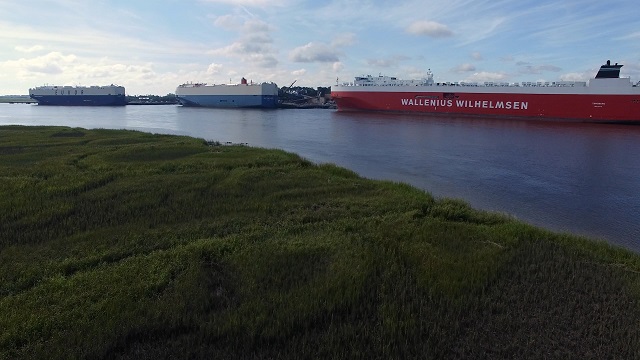Georgia Ports Boosts Car Processing Space
Georgia Ports Authority has announced a 100-acre expansion of the Colonel’s Island auto terminal.
The new roll-on/roll-off capacity is part of an initiative to service a growing market, while staying 20 percent ahead of the port’s current demand.
Twenty of the 100 acres are paved and in use by Wallenius Wilhelmsen Logistics, while International Auto Processing has leased another 49 acres it will occupy by May 2017.
Last month, the GPA Board of Directors approved the development of a separate 30-acre parcel, which should come online in January.
The Port of Brunswick has 652 acres of auto processing space available for development. The long-term plan for Colonel’s Island’s south side will eventually add 540 acres in GPA-owned land to the auto processing operation. Another 140 south side acres owned by Mercedes and International Auto Processing brings Brunswick’s total vehicle space to 1,039 acres.
With a 10-year compound annual growth rate of 11.9 percent, compared to the national CAGR of 2.6 percent (FY2006 to FY2016), Colonel’s Island is the fastest growing autoport in the U.S.
Fiscal Year 2016 was the fourth straight year that auto volumes in Brunswick topped 600,000 units. Brunswick Ro/Ro units totalled 621,934 in FY2016. Another 41,323 moved via Ocean Terminal in Savannah.

Expanded Rail and Storage Facilities
Logistec, an international terminal operating company, recently opened two new warehouses totalling 221,675 square feet for wood pellet storage along the Brunswick River. The facilities are expected to handle more than 600,000 tons of wood pellets annually.
The wood pellets are a renewable biomass fuel source shipped largely to Northern Europe, where they are used in energy production. The pellets are sourced mainly from the Georgia forestry industry.
In the past fiscal year, the ports authority has completed an 8,700-foot rail expansion at Anguilla Junction, for a total of 39,000 feet of track. The added track will provide greater flexibility and storage capacity to build longer trains carrying exponentially more cargo.
